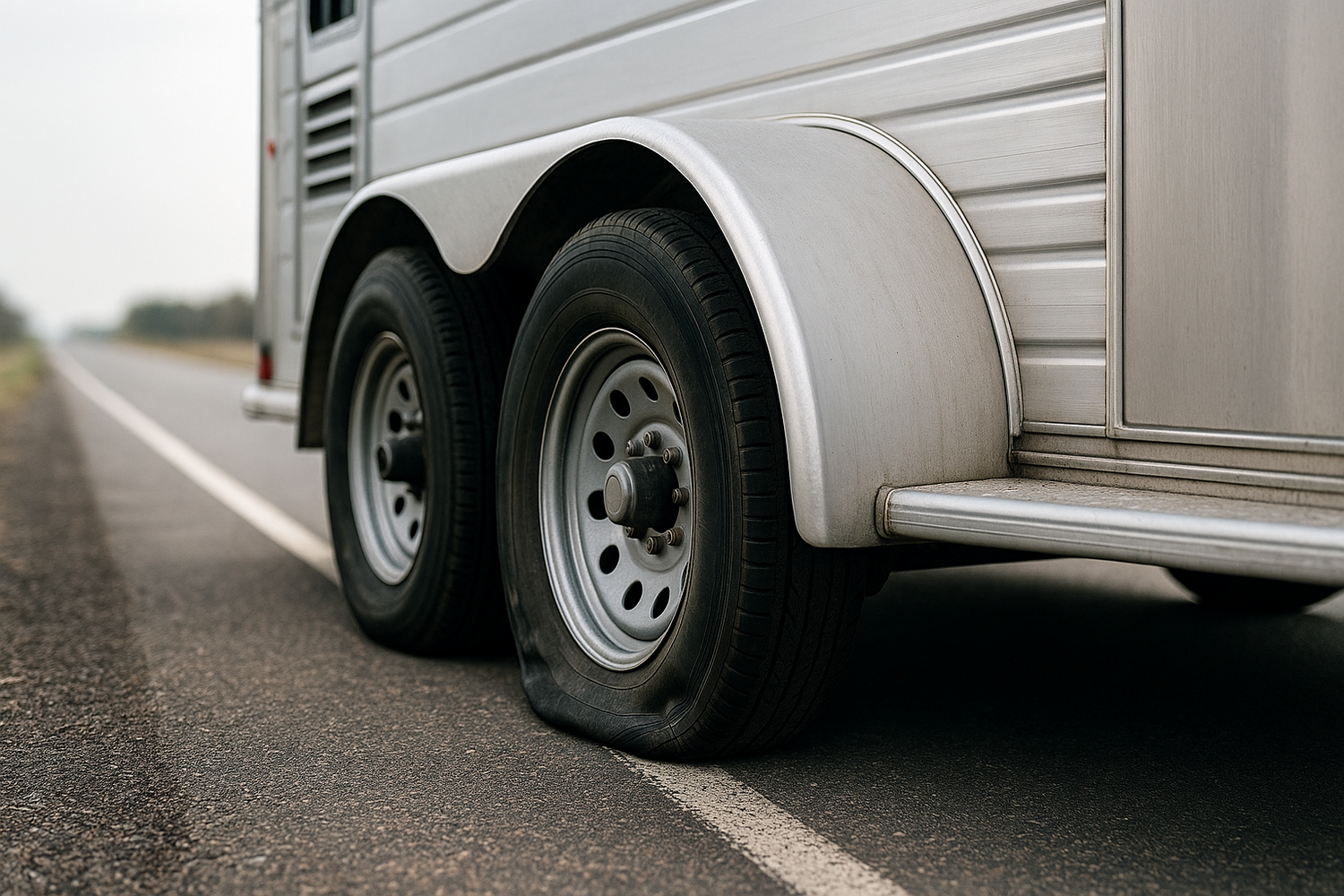Before diving into the intricacies of trailer wheel bearing tension, it’s essential to understand the basics of trailer wheel bearings themselves. These critical components serve as the interface between the trailer's wheel and axle, ensuring smooth rotation and stability during transport. A well-functioning wheel bearing is crucial for maintaining safe and efficient trailer operation.
Trailer wheel bearings are typically made of hardened steel and are designed to withstand significant loads and friction. They operate by allowing the wheels to rotate freely while supporting the weight of the trailer. Here are some key points to consider:
- Types of Wheel Bearings: There are different types of wheel bearings, including roller and ball bearings, each with unique advantages. Roller bearings are often preferred for heavy-duty applications due to their load-bearing capabilities.
- Grease and Lubrication: Proper lubrication is vital for preventing wear and tear. Regularly check and maintain the grease levels in your wheel bearings to ensure they function optimally.
- Signs of Wear: Be alert for signs of wear, such as unusual noises, excessive heat, or uneven tire wear. These indicators can signal that your wheel bearings may need attention.
Understanding these fundamentals is the first step towards mastering trailer wheel bearing tension. Regular maintenance and monitoring can prevent costly failures and ensure the longevity of your trailer. For peace of mind while towing, consider utilizing TrailerWatchdog’s monitoring system, providing real-time data on axle temperature and tire conditions. Tow with peace of mind, knowing that trailerwatchdog is standing guard.
Importance of Proper Wheel Bearing Tension
Maintaining the right wheel bearing tension is not just a matter of performance; it is critical for safety and longevity. Proper tension ensures that the wheel bearings can handle the stresses of towing while minimizing friction and heat generation. When wheel bearings are too loose or too tight, they can lead to severe mechanical failures.
Here are several reasons why proper wheel bearing tension is essential:
- Enhanced Safety: Incorrect tension can cause instability while towing, increasing the risk of accidents. Properly adjusted bearings help maintain control, reducing the likelihood of trailer sway or wheel detachments.
- Improved Performance: Well-tensioned wheel bearings contribute to smoother wheel rotation, which can improve fuel efficiency and reduce wear on other components such as tires and brakes.
- Increased Longevity: Consistent maintenance of bearing tension can extend the lifespan of both the wheel bearings and the trailer itself. This not only saves money on repairs but also ensures that your trailer remains reliable over time.
- Cost Savings: Addressing wheel bearing issues early can prevent more significant problems down the road. Avoiding catastrophic failures translates to fewer repairs and extended intervals between maintenance.
Understanding the importance of proper wheel bearing tension is vital for anyone who owns or operates a trailer. It lays the groundwork for effective maintenance practices, ensuring that your towing experience remains safe and efficient.
Signs of Incorrect Wheel Bearing Tension

Recognizing the signs of incorrect wheel bearing tension is crucial for the timely maintenance of your trailer. Ignoring these warning signs can lead to severe damage and safety hazards. Below are some key indicators that suggest your wheel bearings may need immediate attention:
- Excessive Heat: If you notice the wheel hub becoming unusually hot to touch during operation, it may indicate that the bearings are either too tight or inadequately lubricated. Monitoring axle temperatures can provide vital information about bearing health.
- Unusual Noises: Listen for grinding, rumbling, or clicking sounds emanating from the wheel area. These noises often signal that the bearings are damaged or improperly adjusted.
- Vibration or Wobbling: If the trailer experiences excessive vibration or feels unstable while towing, it could be a sign of loose bearings. This instability not only affects handling but can also lead to further mechanical issues.
- Tire Wear Patterns: Inspect your tires for uneven wear. If one tire shows more wear than the others, it might indicate that the corresponding wheel bearing is not properly tensioned.
- Pulling to One Side: A trailer that pulls to one side while being towed can indicate a problem with the wheel bearings. This misalignment can result from incorrect tension and can compromise your safety on the road.
By staying vigilant and addressing any of these signs promptly, you can prevent further complications and ensure the safe operation of your trailer.
Step-by-Step Guide to Adjusting Tension

Adjusting the trailer wheel bearing tension is essential for maintaining optimal performance and safety. Follow this step-by-step guide to effectively adjust the tension on your trailer’s wheel bearings:
- Gather Necessary Tools: Before starting, ensure you have the right tools: a jack, jack stands, a torque wrench, and a bearing packer if needed.
- Lift the Trailer: Use the jack to lift the trailer and secure it with jack stands. This will provide a safe working environment.
- Remove the Wheel: Carefully take off the wheel to gain access to the hub assembly. Make sure to keep track of all the nuts and bolts for reassembly.
- Inspect the Bearings: Before adjusting, inspect the wheel bearings for any signs of wear or damage. Replace any components that are not in good condition.
- Adjust the Tension: Locate the adjusting nut on the hub. Tighten it gently until you feel slight resistance. Then, back off the nut slightly to create space for the bearing to rotate freely. The goal is to achieve a snug fit without excessive tightness.
- Check for Play: After adjustment, check for any lateral play by wiggling the wheel. There should be minimal movement; if there is excessive play, repeat the adjustment process.
- Reassemble the Wheel: Once the tension is correctly set, reattach the wheel, ensuring all nuts and bolts are tightly secured.
- Lower the Trailer: Carefully remove the jack stands and lower the trailer back to the ground.
- Test Drive: Finally, take your trailer for a short test drive to ensure everything is functioning smoothly. Listen for any unusual noises or vibrations.
Following these steps will help maintain the integrity of your wheel bearings and enhance the safety of your trailer on the road.
Best Practices for Regular Wheel Bearing Maintenance

Establishing a routine for wheel bearing maintenance is crucial for the longevity of your trailer and the safety of your travels. Here are some best practices to consider for effective regular maintenance:
- Regular Inspections: Conduct visual inspections of your wheel bearings and hubs at least once a month. Look for signs of grease leakage, rust, or wear. Early detection can prevent costly repairs.
- Maintain Proper Greasing: Ensure that your wheel bearings are adequately lubricated. Use high-quality bearing grease suitable for trailer applications. Repack bearings every 12 months or after every 12,000 miles of travel.
- Monitor Axle Temperature: Utilize a trailer monitoring system to keep an eye on axle temperatures. Abnormal temperature readings can indicate lubrication issues or bearing wear, allowing for prompt intervention.
- Check Tension Settings: Regularly verify that your trailer wheel bearing tension is properly adjusted. This ensures that the bearings operate efficiently and reduces the risk of damage.
- Watch for Unusual Noises: Pay attention to any strange noises coming from your trailer while it’s in motion. Grinding or whirring sounds can signal bearing failure, requiring immediate inspection.
- Keep Records: Maintain a log of all maintenance activities, including inspections, adjustments, and replacements. This can help you track the condition of your bearings and identify patterns over time.
- Professional Servicing: Consider having your wheel bearings professionally serviced at least every two years. A trained technician can conduct thorough inspections and make necessary adjustments.
By adhering to these best practices, you can significantly reduce the risk of wheel bearing failures, ensuring a safer and more reliable towing experience.
How Trailer Monitoring Systems Enhance Performance

In today’s fast-paced world, having a trailer monitoring system can significantly enhance the performance and safety of your trailer. These advanced systems provide real-time data and insights that allow for proactive maintenance and informed decision-making. Here are several ways in which trailer monitoring systems can improve your trailer's performance:
- Axle Temperature Monitoring: By continuously monitoring axle temperatures, these systems help identify overheating issues before they lead to catastrophic failures. This proactive approach allows for timely interventions, ensuring that your trailer remains in optimal condition.
- Tire Pressure Tracking: Proper tire pressure is crucial for safe towing. Monitoring systems provide alerts for low tire pressure, helping to prevent blowouts and ensuring better fuel efficiency.
- Data Analytics: Advanced analytics can track performance trends over time, allowing owners to make data-driven decisions regarding maintenance schedules and upgrades.
- Instant Alerts: Get instant notifications about any irregularities in temperature or pressure, enabling you to address issues immediately rather than waiting for a scheduled inspection.
- Enhanced Safety: With constant monitoring, you can tow with confidence, knowing that potential issues are being tracked and managed before they escalate into serious problems.
- Increased Longevity: Regular monitoring leads to better maintenance practices, ultimately extending the lifespan of your trailer and its components.
By integrating a trailer monitoring system, you transform your trailer into a smart trailer, ensuring safety, efficiency, and peace of mind. Tow with peace of mind, knowing that trailerwatchdog is standing guard. Visit trailerwatchdog.com to learn more about our advanced monitoring solutions.








